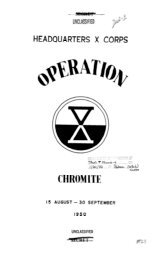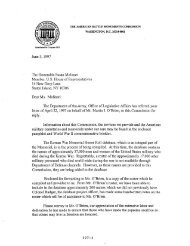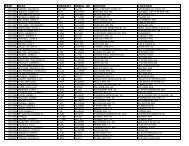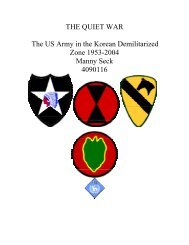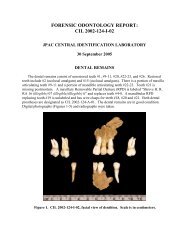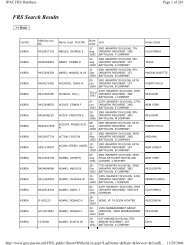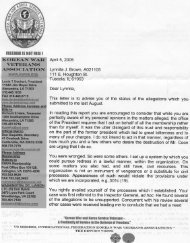FORENSIC ANTHROPOLOGY REPORT: - Korean War Educator
FORENSIC ANTHROPOLOGY REPORT: - Korean War Educator
FORENSIC ANTHROPOLOGY REPORT: - Korean War Educator
You also want an ePaper? Increase the reach of your titles
YUMPU automatically turns print PDFs into web optimized ePapers that Google loves.
Forensic Anthropology Report: CIL 2002-124-1-02<br />
OBSERVATIONS<br />
The overall condition of the remains indicates both surface and subsurface exposure during<br />
the postmortem interval. The remains display a range of color from white to dark brown as a<br />
result of weathering and sediment staining. There is cortical delamination and postmortem<br />
breakage present on nearly all of the skeletal elements. The amount of postmortem breakage is<br />
extensive, especially on the cranium. The anterior aspect of the right innominate, superior to the<br />
arcuate and iliopectinal lines, exhibits a mosaic splitting pattern associated with prolonged<br />
surface exposure (Behrensmeyer 1978). Inferior to the arcuate and iliopectinal lines and on the<br />
posterior aspect of the innominate, the bone color demonstrates evidence of prolonged contact<br />
with soil. Numerous parallel striations indicative of rodent gnawing activity are present on the<br />
broken surface of the ilium (Haglund 1997) (Figure 5).<br />
Two skeletal anomalies were noted during examination. An acetabular fold is present on the<br />
right innominate. The fold is located on the supramedial surface of the acetabular roof. The<br />
etiology of this trait is unknown, but it is believed to be an epigenetic or biomechanical trait<br />
(Mafart 2005). The second anomaly observed involves a rare coalition of the navicular and<br />
cuboid bones (Talkhani and Laing 1999). While a complete bony bridge is not present, both<br />
tarsals have a bony extension, producing a small gap between the articular surfaces. The<br />
articular surfaces of these extensions are rugose and porotic, suggesting that a fibrous<br />
(syndesmosis) or cartilaginous (synchondrosis) union existed. This type of tarsal coalition is<br />
usually asymptomatic; however, in some cases the individual may feel pain or stiffness in the<br />
foot (Talkhani and Laing 1999).<br />
Specimens sampled for mtDNA include teeth (#I, #2, #9, #11, #15, #20, and #22), the right<br />
humeral diaphysis, and the petrous portion of the right temporal bone. For analytical purposes,<br />
each element or fragment in the assemblage has been labeled in pencil with a code that<br />
corresponds to its original field provenience.<br />
CONCLUSIONS<br />
The human skeletal remains designated CIL 2002-124-1-02 consist of one male individual,<br />
greater than or equal to 16 years of age, with a stature between 65.5 and 71.7 inches. There is a<br />
perimortem fracture present on the distal left humerus.<br />
CHRISTIAN M. CROWDER, PhD<br />
Anthropologist<br />
Page 6 of 8




